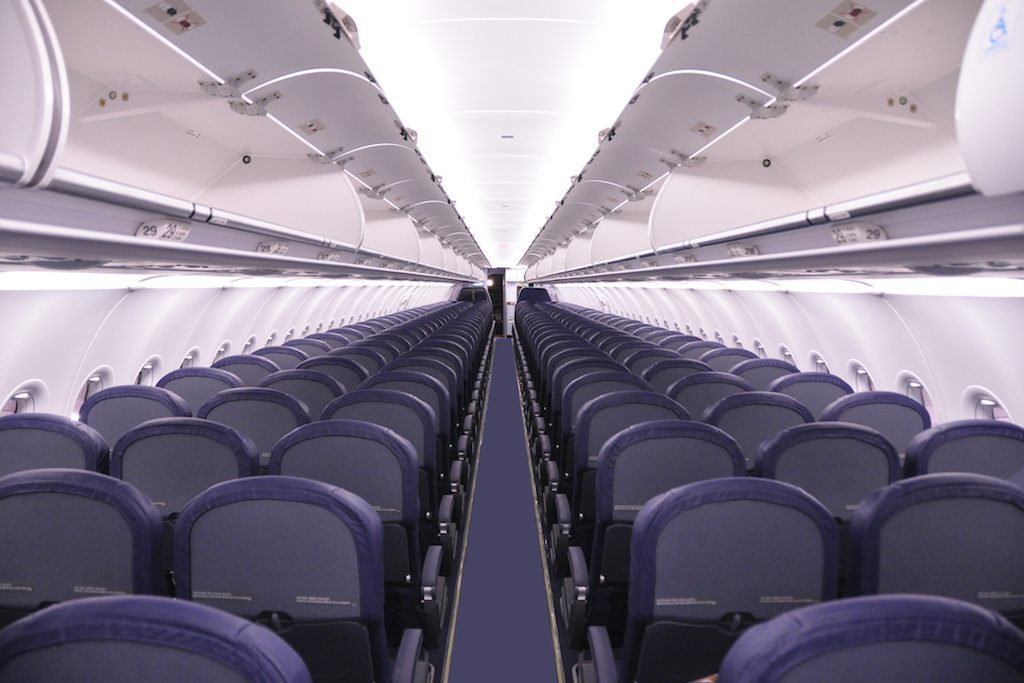Skift Take
Almost everything is improving at Spirit Airlines. Its on-time performance is getting better, and customer satisfaction is rising, according to the airline. More importantly for investors, ancillary revenue is up. Can the good times last?
Spirit Airlines charges extra for nearly everything, including carry-on bags and onboard water, so it can keep base fares low and still produce profits Wall Street wants to see.
To the outsider, it seems like a highly profitable strategy. But in the past three years, something surprising happened. The discount airline’s ancillary revenues, measured per passenger, plateaued, leading some analysts to express concern. Would they ever recover?
On Wednesday, Spirit executives reported they had, crediting a multi-year strategy to boost what they call non-ticket revenue.
For the year, Spirit told investors it made more than $55 in per-passenger ancillary revenue for the first time since 2014. The fourth quarter was better, with non-ticket revenue increasing 5.2 percent, year-over-year, to $56.70.
The growth generally is not the result of new fees. Instead, Spirit executives said they have improved at managing how extra costs are assessed. Increasingly, Spirit is implementing dynamic pricing, setting fee rates based on demand, just as with airfare. The airline also reported it is making more money selling bundles, as passengers buy a group of extras.
This is not a new focus, but it has taken some time to get it right, chief commercial officer Matt Klein said. Airlines have been using dynamic pricing for fares for decades but charging different amounts for items like checked luggage, based on demand, is newer.
“You can’t just implement a new revenue management strategy and expect it to work overnight, especially for something, for us, that’s new, which is revenue managing ancillary products and services,” Klein said. “We’re going to continue to improve, continue to make that better, but a lot of the big plunge we think we captured late last year, so we’ll just continue to improve on it.”
Spirit executives told analysts to expect further growth this year. They said they expect to earn between $56 and $57 per passenger from sources other than airfare, ensuring the airline has roughly a 50-50 mix in revenue per passenger — about half from airfare and half from fees.
If Spirit can deliver, it could boost profits. Last year, the airline reported $155.7 million in net income with an operating margin of 10.6 percent. In the fourth quarter, Spirit earned $91.9 million in net income with operating margin of 15.8 percent.
Changes in Off-Peak Flying Help
While much of Spirit’s improvement comes from implementing sophisticated selling strategies, executives also said non-ticket revenue has improved as the airline cut some less profitable Tuesday and Wednesday flights.
Fares during off-peak periods are cheap, and passengers on Tuesday and Wednesday often buy fewer extras.
Around holidays and on Thursday, Friday and Sunday, demand for ancillary items increases along with fares, Klein said.
“The bundled services offering definitely kicks in a lot more when families are traveling together and they want to sit together on the aircraft,” he said. “They’re checking bags. And the bundle offering that we put together for them also gives them a couple of additional items that really seem to be have a pretty good uptake around peak periods.”
More Work Ahead
Klein said Spirit can add non-ticket revenue by improving how it sells vacation packages, allowing customers to pair high-margin hotels and rental cars with airfare. He told analysts that business “has definitely been performing below what we would want to see.”
The airline, he said, is changing content providers and updating technology to try to improve its offerings.
“This is something that will take time as well, [as we] get more thoughts around when different customers are shopping for different kinds of destinations, [and ask] how do we offer up the proper offer at the right time to the right customer?” Klein said.
Spirit also soon plans to redevelop its frequent flyer program in hopes it can increase future revenues. It has not overhauled it in several years.
“We do know that we have leisure customers who want a better loyalty program from us, and it’ll take into account more things that are part of who we are, part of our ancillary model and part of our low-fare model,” Klein said.
The Daily Newsletter
Our daily coverage of the global travel industry. Written by editors and analysts from across Skift’s brands.
Have a confidential tip for Skift? Get in touch
Tags: airline innovation, airline passenger experience, spirit airlines, ultra low-cost carriers
Photo credit: Spirit is getting more sophisticated with its ancillary fee strategy. Pictured is the interior of one of its Airbus aircraft. Spirit Airlines
